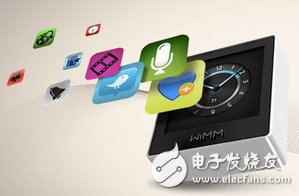Wearable electronics, especially smart watches, are gradually gaining attention. There are already many large international manufacturers and emerging players investing in development, but they are still in the early stage. Therefore, hundreds of schools contend, with various design methods and implementation methods, and great differences . In this regard, this article analyzes the processor, storage resources, battery, charging and other design methods.

Attached photos: Smart watches have been launched one after another, each with its own hardware specifications. (Pic: WIMM Labs) BigPic: 516x338
Single-core 32-bit Cortex-M
The processor is explained first. The processor can range from the lowest-order single-core 16-bit microcontroller to the highest-order dual-core 32-bit processor. For example, the Meta Watch table of MetaWatch Company uses the MSP430 microcontroller of Texas Instruments (TI), which is the exclusive 16-bit architecture microcontroller of Texas Instruments.
Another example is Omate's TrueSmart watch using MediaTek's (MTK) MT6572, which internally has two Cortex-A7 execution cores with a clock rate of up to 1GHz. In addition, there are heterogeneous dual-core methods, such as AGENT table using a Cortex-M4 processor, but there is an auxiliary Atmel AVR series microcontroller, in order to emphasize better and smarter power management control.
Although there are single-core 16-bit to dual-core 32-bit, most smart watches use single-core 32-bit, and more Cortex-M series, only a few use Cortex-A series (such as Omate's TruSmart Watch or Samsung Galaxy Gear watch).
Storage resources: 128KB-32GB
The processors are very different, and the associated memory and storage resources are also very different. The memory can be only 128KB or as high as 4GB; the storage can be only 1MB or as high as 32GB (such as the WIMM One table of WIMM Labs, the team It has been merged by Google a few days ago), and even a Micro-SD memory card can be used to expand the extended memory and storage space.
There are various schools of battery design
The processor is the most core, and the last micro battery is currently available in all schools. The simplest battery design is to directly use the standard button battery commonly used today, such as the COOKOO watch of ConnecteDevice. The CR2032 lithium battery is used. .
If you do not use standard button batteries, you can only use lithium polymer batteries. At present, different smart meters have different electrical capacities, as low as 100mAh (such as Sony LiveView), medium to 258mAh (such as Motorola MOTOACTV, high 315mAh (such as Samsung Galaxy Gear).
Wireless charging has great advantages
In addition to the difference in battery power, the charging method is also different. Generally speaking, the charging method is the same as that of a smart phone, that is, the standard Micro-USB interface. However, some manufacturers use special connectors in order to make the watch waterproof, but the essence is still Micro-USB, as is the case with Pebble's Pebble watches, and it also adds a magnetic connection effect.
There are also those who do not use USB technology at all. For example, Meta Watch uses a special clip-type charger. The clip (connector) is also a transmission interface for smart watch to communicate with a computer or external, but it uses Spy. -Bi-Wire is a tandem JTAG transmission protocol. There is no other reason for adopting this special transmission protocol, because the microprocessor used in the Meta Watch is TI MSP430, and the processor supports this protocol, even the The agreement was developed for the microcontroller.
In addition, some companies do not use the actual contact charging method, but use non-contact wireless inductive charging. For example, the AGENT table adopts the wireless charging standard Qi (Chinese: Qi) established by WPC (Wireless Power ConsorTIum).
Today, many smartphones have adopted the Qi wireless charging standard, such as Nokia ’s Lumia series smartphones, Google ’s Nexus 4 smartphones, Nexus 7 tablet (only available in the second generation), Samsung ’s Galaxy S3 / S4 smart Mobile phone, or Galaxy Note 2 with handwriting tablet function.
If the Qi standard charging base can become more and more popular, the base can not only charge the mobile phone, but also charge the tablet and smart watch, so people who buy a smart watch may no longer need to buy a charging cable, and the data transmission uses Bluetooth to make the wireless The overall value (comprehensive effect) of the charging stand has increased.
Of course, in addition to Qi, the other two major wireless charging camps and standards (PMA, A4WP) may also be favored by smart watch manufacturers, and actively extend the layout and card positions. From this point of view, the different charging methods seem to have their considerations and reasons. Button batteries can be temporarily bought at convenience stores for replacement. Micro-USB is the most common, waterproof is also necessary, and special clips are more compatible with the micro Controllers, wireless charging have the possibility of future synergy ...
Strap design
In addition to the processor and battery, even the strap is a bunch of different design considerations, such as a design integrated with the watch core, or you can replace the strap of different colors, you can replace the standard 24mm width strap, the strap can be leather , Silicone, stainless steel, etc., plus the waterproof design of ATM standards (such as 3ATM, 5ATM), IP standards (such as IP57, IP58), it seems that the design development of smart watches still has a period of time go.
Best Solar Flood Lights,Solar Motion Flood Lights,Solar Sensor Security Light,Commercial Solar Flood Lights
Jiangmen Liangtu Photoelectric Technology Co., Ltd. , https://www.liangtulight.com